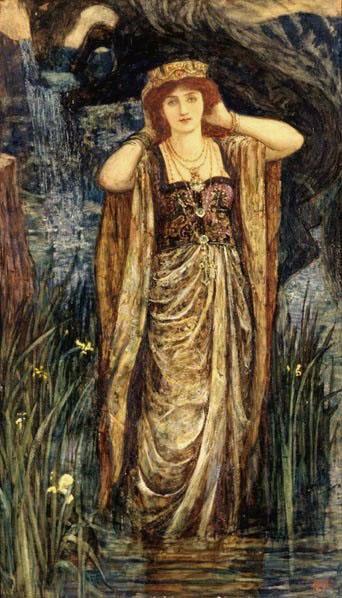LYRICS
Dear Guinevere,
Why do we veer
From virtue and valor
Why do we squalor
Scapegoating responsibility
Neglecting rationality
Craving brutality
Bringing on inevitability
Are all of us
Morally ambiguous
Are none of us
A positive influence
Consequences of betrayal
Will be our end all
We betrayed our Earth
We betrayed our birth
Guinevere, my dear
I fear The End near
Oh dear, Guinevere
Our future’s clear
- Guinevere-Part-I.mp3 (unplugged to save energy)
- Guinevere-Part-II.mp3
- Guinevere-Part-II-Instrumental.mp3
- Guinevere-LH-Casio-WK-3500.MID (Left Hand / also controlled Korg PS60)
- Guinevere-RH-Yamaha-PSR-740.MID (Right Hand / also controlled microKorg and miniNOVA vocorder)
- Guinevere-piano-and-strings Interlude.MID
Chords: Dm C / F D / Dm F / Dm C / Dm Bb / Dm C C Dm; Part II @ 80 Beats Per Minute
Instrumentation: Vocals (TC-Helicon VOICELIVE and MiniNova Vocorder), Carlo Robelli Classical Guitar, Keyboards (Korg PS60, Casio WK-3500, Yamaha PSR-740, MiniNova, MicroKorg)
ABOUT Guinevere
Guinevere, an early-medieval queen of Great Britain, is intricately woven into the Arthurian legend, with her portrayal spanning a spectrum from a fatally flawed and villainous traitor to a noble and virtuous lady. Initially introduced in popular literature in the early 12th century, nearly seven centuries after the purported times of King Arthur, Guinevere’s character has been shaped by various narratives.
The earliest datable mention of Guinevere appears in Geoffrey of Monmouth’s Historia Regum Britanniae, where she is seduced by Mordred during his ill-fated rebellion against Arthur. In a later French Arthurian romance tradition, prominently featured in Le Morte d’Arthur by Thomas Malory, Guinevere is portrayed as the daughter of King Leodegrance, entrusted with the Round Table after Uther Pendragon’s death.
Caradoc of Llancarfan’s account in the Life of Gildas, written between 1130 and 1150, introduces the story of Guinevere’s kidnapping and rape by Melwas, the king of the “Summer Country,” leading to Arthur’s determined quest to rescue her.
In the 13th-century French chivalric romances, Guinevere’s narrative includes an arranged marriage to Arthur, with the Round Table as her dowry. During Arthur’s absence in France pursuing Lancelot, she faces challenges, including Mordred’s treacherous plans. In certain versions, Guinevere assents to Mordred’s proposal, while others depict her resisting his advances in the Tower of London and later seeking refuge in a nun convent during the siege.
Following Arthur’s return and the fatal Battle of Camlann, where Mordred meets his end, Guinevere becomes a scapegoat for the violence during the civil war. Despite her complex role, Guinevere’s character is often devoid of personal perspective or motivation. In the aftermath of Arthur’s death, she retires to a convent as an act of penitence for her perceived infidelity.
Guinevere’s multifaceted portrayal reflects the evolving interpretations of her character throughout the centuries within the Arthurian legend.
The Guinevere Metaphor
Guinevere’s character in the Arthurian legend can be metaphorically linked to climate change through the complexities and consequences surrounding her choices and actions. Here are some parallels:
- Flawed Human Agency: Guinevere’s portrayal as a flawed and sometimes morally ambiguous character reflects the imperfect decisions humans make. Similarly, the collective human actions contributing to climate change, such as deforestation, excessive use of fossil fuels, and pollution, showcase the flawed agency responsible for environmental challenges.
- Betrayal and Consequences: Guinevere’s affair with Lancelot, leading to betrayal and consequences for the kingdom, can be likened to humanity’s exploitation of natural resources and the subsequent environmental consequences. The betrayal of environmental ethics and sustainability principles can lead to severe repercussions for the planet.
- Scapegoating and Responsibility: Guinevere’s role as a scapegoat for the violence during the civil war draws parallels to the tendency to blame individuals or specific factors for climate change. The complexity of environmental issues often leads to the scapegoating of particular industries or practices, deflecting attention from collective responsibility.
- Penitence and Redemption: Guinevere’s retreat to a convent in penitence reflects the acknowledgment of wrongdoing and a desire for redemption. In the context of climate change, efforts toward environmental conservation, sustainable practices, and global initiatives can be seen as humanity’s collective penitence and attempts at redemption for the damage inflicted on the planet.
- Complexity of Motivations: Guinevere’s character lacks a fully developed perspective or motivation in some versions of the legend, mirroring the complexity and diversity of motivations behind climate-related actions. Climate change is driven by a multitude of factors, including economic interests, political decisions, and individual behaviors, making it challenging to attribute a singular motivation.
While the metaphorical connection between Guinevere and climate change may be symbolic, it highlights the intricate relationship between human choices, consequences, and the need for collective responsibility in addressing complex challenges.
From the album: Camelot’s Resurgence
A song about The Human Induced Climate Change Experiment
